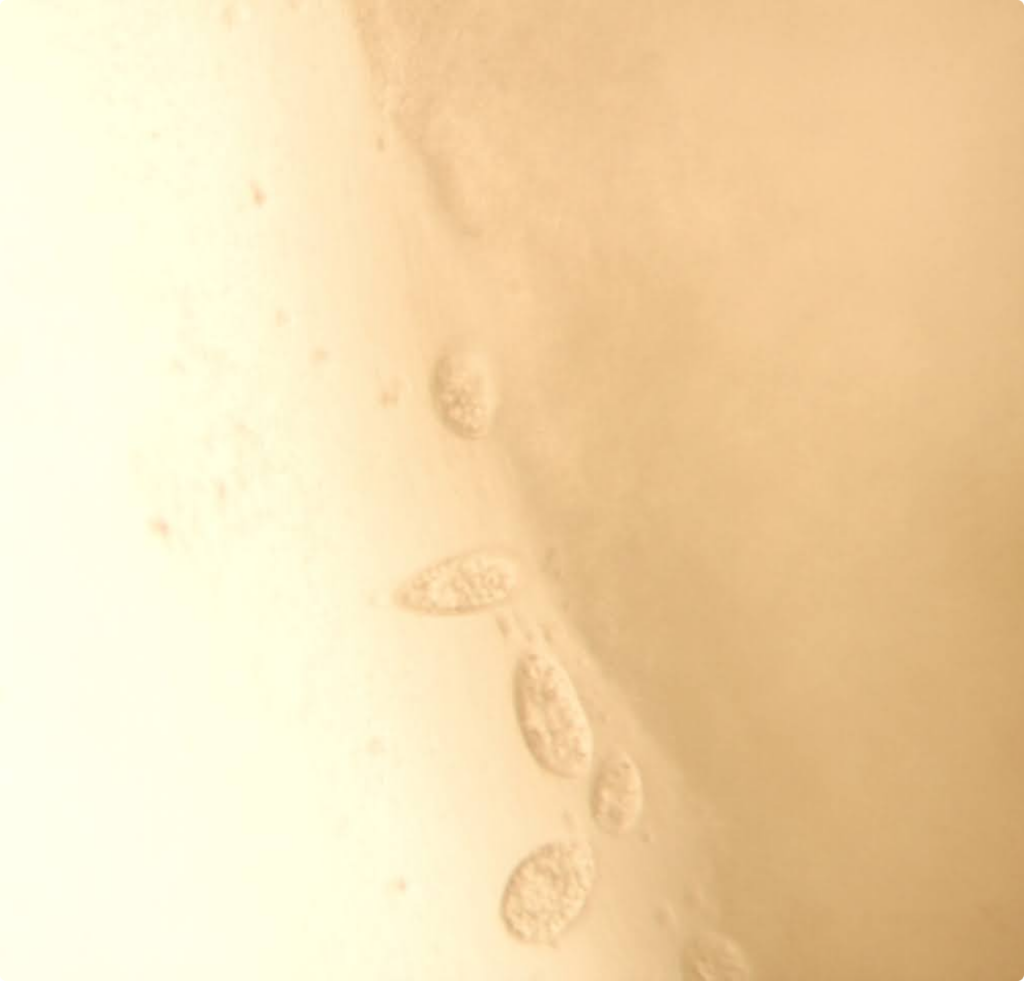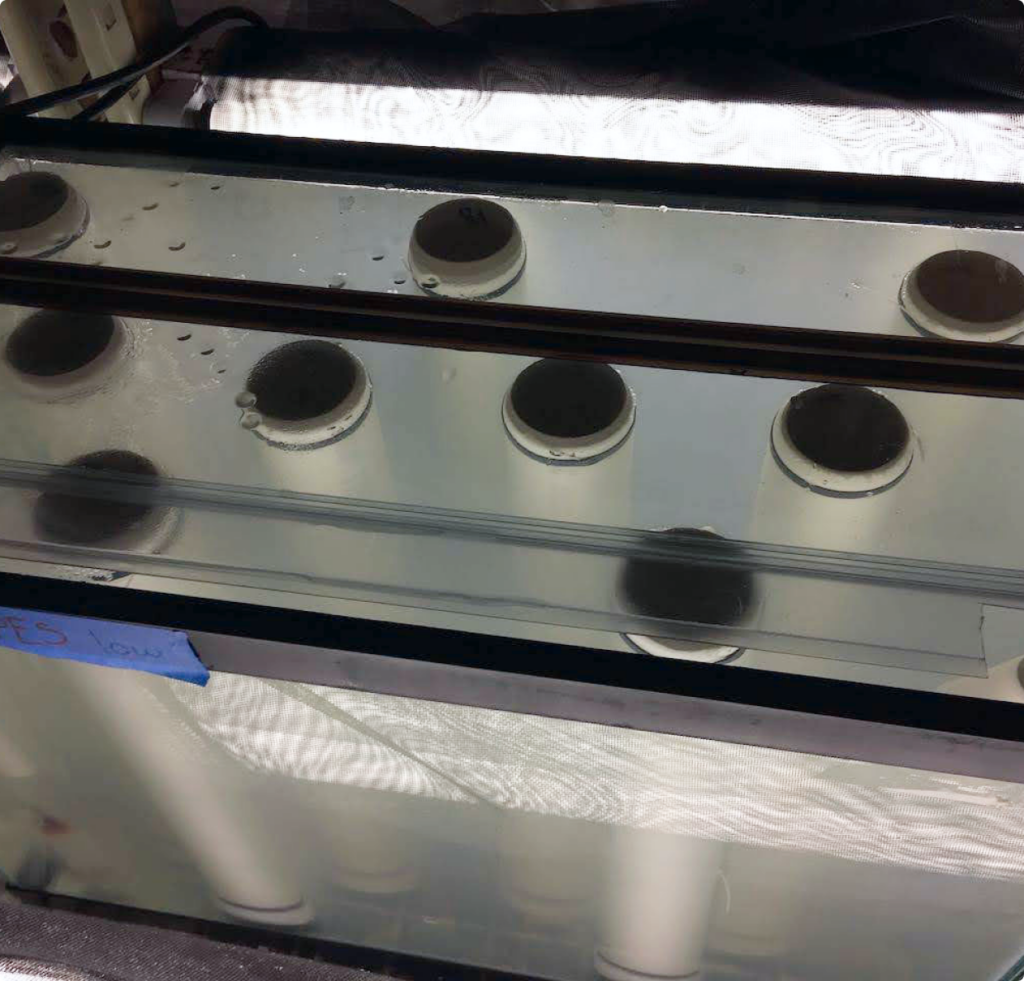Back to: Monitoring Growth
Ciliates are another common problem in the hatchery. Ciliates are a large and diverse group of protozoans, but in the hatchery they can be thought of as any single celled organism that has short, hair-like structures that are used for movement and food gathering.
Ciliates can be spotted during microscopic observations as single moving cells within the water or eating away at the kelp that is growing on your seed string. When the density of ciliates in the water reaches a certain point, the entire tank will turn cloudy.


You are able to decrease your chance of acquiring ciliates by conducting frequent water changes, using advanced sterilization methods (such as UV or ultrafiltration), and/or robustly cleaning the equipment and tanks used in the hatchery. However, if things start to get out of hand and you notice an abundance of swimming cells under the microscope or very cloudy tank water, you can dip your spools in freshwater. Ciliates are typically unable to withstand the sudden change in salinity, and a 15- to 30-second dip in distilled or deionized fresh water will help kill off most of the ciliates on the spool with minimal stress to the kelp. These dipped spools should then be placed in a newly prepared and sterile culture tank.
It is best to not use this method until the spools have reached the gametophyte stage or later. This ensures that the kelp seed is hardy enough to withstand the abrupt change in salinity.